 by "ttyymmnn" (ttyymmnn)
by "ttyymmnn" (ttyymmnn)
Published 11/14/2017 at 12:35
 by "ttyymmnn" (ttyymmnn)
by "ttyymmnn" (ttyymmnn)
Published 11/14/2017 at 12:35
Tags: planelopnik history
; Planelopnik
STARS: 12
!!! UNKNOWN CONTENT TYPE !!!
Welcome to
This Date in Aviation History
, getting of you caught up on milestones, important historical events and people in aviation from November 11 through November 14.
!!! UNKNOWN CONTENT TYPE !!!

November 11, 1956 – The first flight of the Convair B-58 Hustler. When the world entered the Nuclear Age following WWII, the problem facing the US Air Force was how best to deliver a nuclear weapon deep into enemy territory, namely the Soviet Union. In the era before the intercontinental ballistic missile (ICBM) and the surface-to-air missile (SAM), the conventional wisdom held that the only way to successfully complete a nuclear bombing mission was to fly at high altitude above enemy fighters and at the greatest speed possible.
In 1949, the Air Research and Development Command (ARDC) issued a Generalized Bomber Study in which numerous aircraft manufacturers submitted proposals to build a new bomber for the Strategic Air Command . The Air Force chose Boeing and Convair to proceed. Boeing proposed their XB-59 supersonic medium bomber, while Convair proposed an aircraft known as the MX-1964. In 1952, the Air Force selected Convair as the winner, and their new bomber, now designated the XB-58. Based on experience with their XF-92 interceptor prototype, Convair’s offering was a fully delta wing aircraft, and it was powered by four General Electric J79 axial flow afterburning turbojets housed in long, slender pods beneath the wings. The Hustler was capable of carrying five nuclear weapons, with four of them carried on external pylons under the wings and a fifth housed in a large pod under the fuselage that also contained fuel. The Hustler had no internal bomb bay.
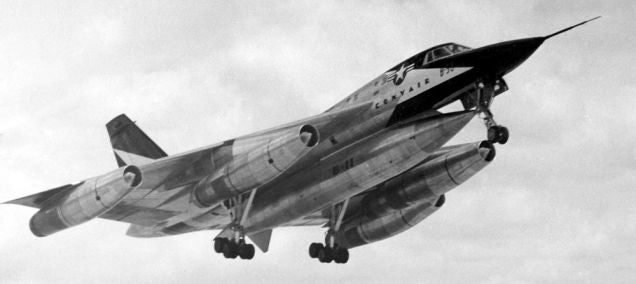
The B-58 had a crew of three seated in tandem, and later models featured a clamshell-like ejection capsule that also included the control stick, meaning that the pilot could continue to fly the plane even when “turtled up,” ready for ejection at a moment’s notice. The escape system could safely eject the crew at 70,000 feet and at speeds as high as Mach 2, and the ejection capsule could also double as a life raft.
When choosing the name for the new bomber, Hustler turned out to be an apt moniker, as the B-58 was the first supersonic jet bomber and could fly as fast as Mach 2. Depending on payload, the Hustler could climb at nearly 46,000 feet per minute with a light load, and it set 19 world speed records during its career. But as fast as the Hustler was, it was expensive to produce, and it carried a relatively light bomb load. It also had a much shorter range than the Boeing B-52 Stratofortress .
!!! UNKNOWN CONTENT TYPE !!!
Following the introduction of Soviet SAMs, the Hustler’s mission changed to low-level penetration which further limited its range. And the fact that it was designed exclusively as a nuclear bomber meant that it could not carry any conventional weapons, limiting its mission capability. After a relative brief 10-year career, the Hustler was retired in favor of the General Dynamics FB-111A which could match it in speed and could carry a far more flexible weapons load, including nuclear bombs. The Hustler was retired in January 1970 and, of the 116 Hustlers produced, 8 survive today as display aircraft. (US Air Force photos)
!!! UNKNOWN CONTENT TYPE !!!
!!! UNKNOWN CONTENT TYPE !!!
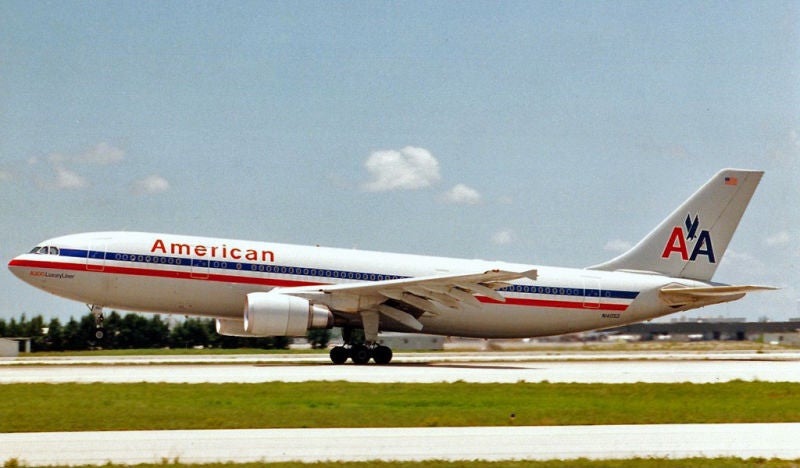
November 12, 2001 – The crash of American Airlines Flight 587. If you’ve seen the movie Top Gun , you remember the accident that that took the life of Goose, Maverick’s best friend and Radar Intercept Officer, when their F-14 flies through the “jet wash” of the fighter ahead. Maverick loses control, goes into a flat spin, the pair ejects, but Goose is killed. That sort of Hollywood-contrived scenario is very real, but the phenomenon that doomed Goose is actually called wake turbulence . Jet wash just sounds cooler, though, and would probably have left movie audiences scratching their head. It wasn’t until the 196os that aerodynamicists began to understand that it wasn’t the air coming out of the jet engines that caused turbulence, it was the horizontal tornadoes of air generated by the wings of an aircraft that can wreak havoc on airplanes following behind. All pilots are trained to deal with wake turbulence, and air traffic controllers routinely advise aircraft during landing or takeoff to be aware of wake turbulence from aircraft in the pattern ahead. A number of crashes have been caused directly, or suspected to have been caused, by wake turbulence, but perhaps the best known, and most tragic, was the crash of American Airlines Flight 587.
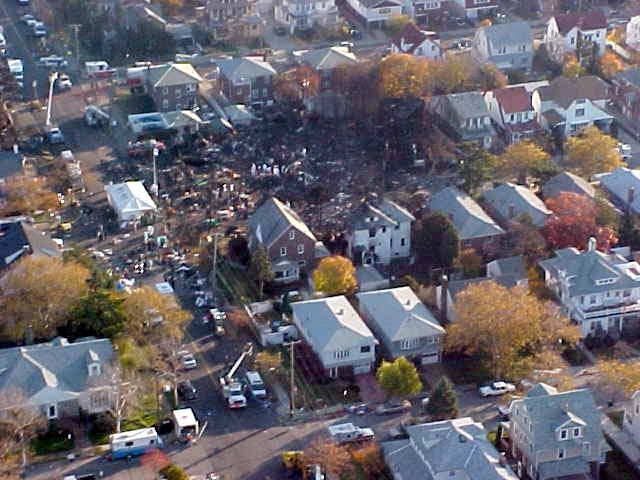
AA587 was a regularly scheduled flight from New York’s John F. Kennedy International Airport to the Dominican Republic. Shortly after takeoff, the
Airbus A300
(N14053) flew into the wake turbulence left behind by a Japan Air Lines
Boeing 747
. In an effort to maintain control, the first officer initiated a series of hard, complete deflections of the rudder. These actions, lasting approximately 20 seconds, placed roughly twice the amount of stress on the vertical stabilizer than Airbus had designed it for, and caused the entire vertical stabilizer to separate from the fuselage. With the loss of yaw control, the airliner entered a flat spin which caused both engines to shear off the wings. The airliner came down in a Queens, New York neighborhood, killing all 260 passengers and crew plus five more on the ground, making it the second deadliest crash in New York state history and the second deadliest accident involving an A300.
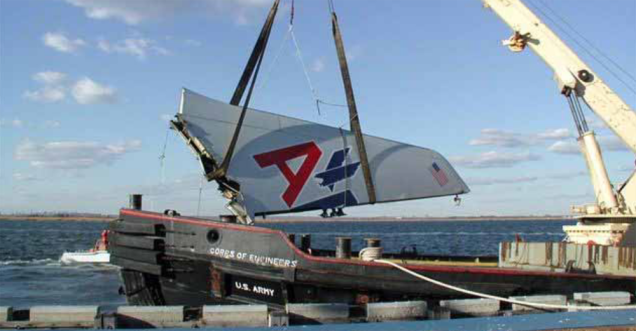
Coming just two months after the September 11 terrorist attacks on New York City and Washington, DC, immediate speculation focused on another act of terrorism. However, National Transportation Safety Board (NTSB) investigators quickly ruled that out, and focused instead on the joint where the composite tail structure attached to the aluminum fuselage. The titanium bolts and composite lugs were found to be sufficiently strong, so attention then turned to the first officer’s rudder deflections as the likely cause of the break up. American Airlines blamed Airbus for making the rudders too sensitive, and Airbus blamed American for faulty pilot training, saying that its pilots were trained to handle wake turbulence in an overly aggressive fashion. Ultimately, the NTSB investigation determine that, while both parties shared some responsibility, it was the first officer’s “unnecessary and excessive rudder pedal inputs” that caused the structural failure leading to the crash. American Airlines has since modified its training program. (Photo by JetPix via Wikimedia Commons ; NOAA photo; US Government photo)
!!! UNKNOWN CONTENT TYPE !!!
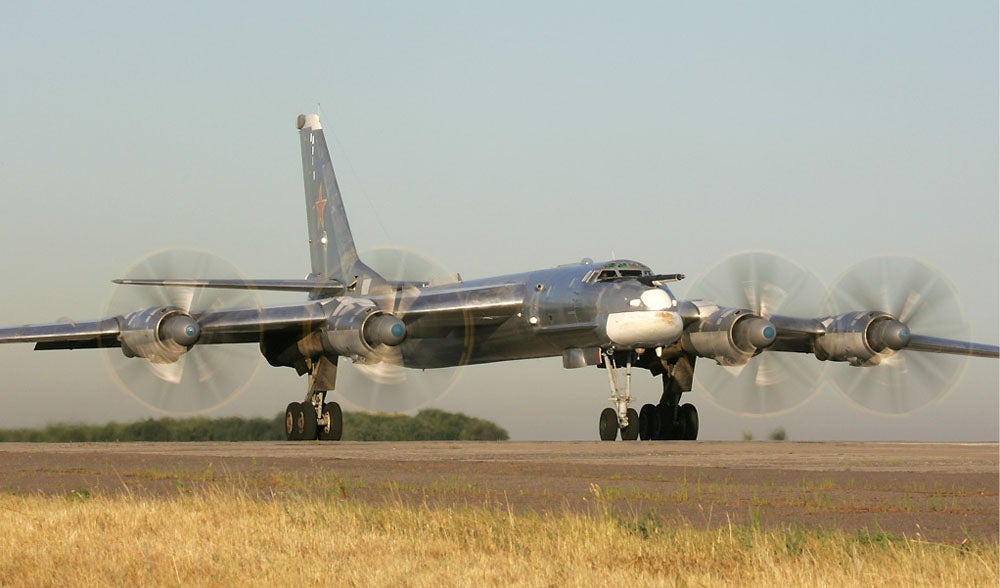
November 12, 1952 – The first flight of the Tupolev Tu-95. At the close of WWII, the best bomber the Soviet Union had in their inventory was the Tupolev Tu-4 (NATO reporting name Bull), a down-to-the-last-rivet copy of a captured American Boeing B-29 Superfortress . The Tu-4 was a fine bomber (after all, it was a clone of the B-29), and the Soviets built nearly 850 of them. But what they lacked was a truly intercontinental bomber that could reach the United States–and return. Tupolev undertook a project to make the ultimate development of the Tu-4/B-29, which resulted in the Tu-85 (NATO reporting name Barge), a bomber that was significantly larger and heavier than the Tu-4 and provided an unrefueled range of nearly 7,500 miles. But the history of aviation was at a crossroads, with jets and turboprops becoming the engines of choice, and the Tu-85, powered by massive compound radial engines, had become an anachronism. Additionally, American experience in the Korean War showed that piston-powered bombers were vulnerable to the new breed of jet fighters.
The Myasishchev Design Bureau began work on the M-4 (NATO reporting name Bison), powered by four turbojets, but its thirsty jet engines limited its range and it was never able to fulfill its transcontinental mission. Tupolev, on the other hand, had begun work on a turboprop-powered bomber, similar in many ways to the Boeing Model 464, an early design concept that led to the B-52 Stratofortress . The Tu-95's 35-degree swept wing housed four massive Kusnetsov NK-12 turboprops, the most powerful ever built, which provided 14,800 shaft horsepower each and turned enormous 18-foot diameter contra-rotating propellers whose tips moved at supersonic speeds. The resulting noise made the Tu-95 one of the loudest aircraft ever built, but all that noise made for a very fast bomber. When the Americans first encountered it, they were chagrined to find that the Tu-95's top speed of 575 mph was faster than the early straight-winged fighters in service over Korea.
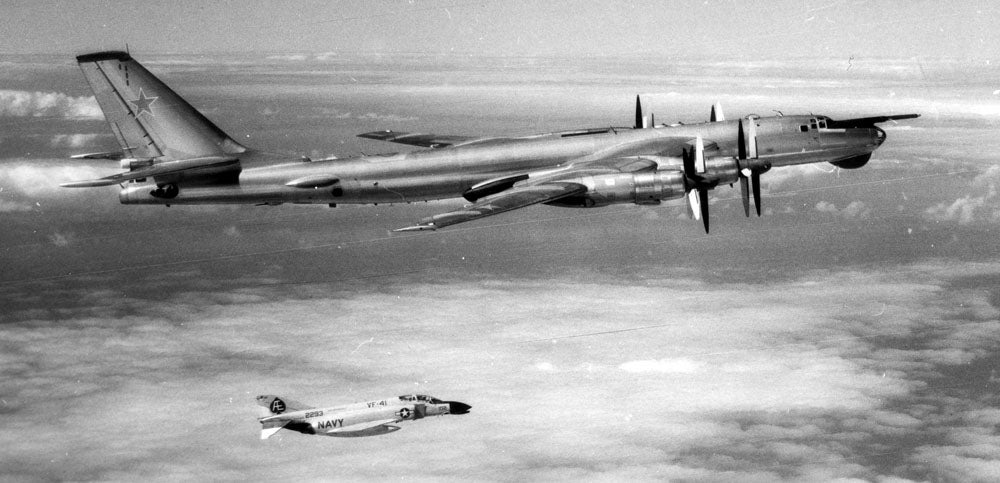
The Tu-95 entered service in 1955, and immediately caused great consternation in the West. Not only was it faster than most fighters of its day, its 9,400-mile range put it easily within reach of North America, and it was capable of delivering the RDS-220 hydrogen bomb, nicknamed the Tsar Bomba , the most powerful nuclear weapon ever detonated. Future variants were armed with air-to-ground missiles such as the Raduga Kh-20 nuclear cruise missile, the Kh-22 anti-ship missile designed to destroy American aircraft carriers, or up to eight Kh-101/102 cruise missiles housed on underwing pylons. Reconnaissance variants became a common sight along the Pacific Ocean borders of the United States and Canada, where they tested the reaction of NORAD forces. Bears were also a constant shadow to Allied fleets the world over.
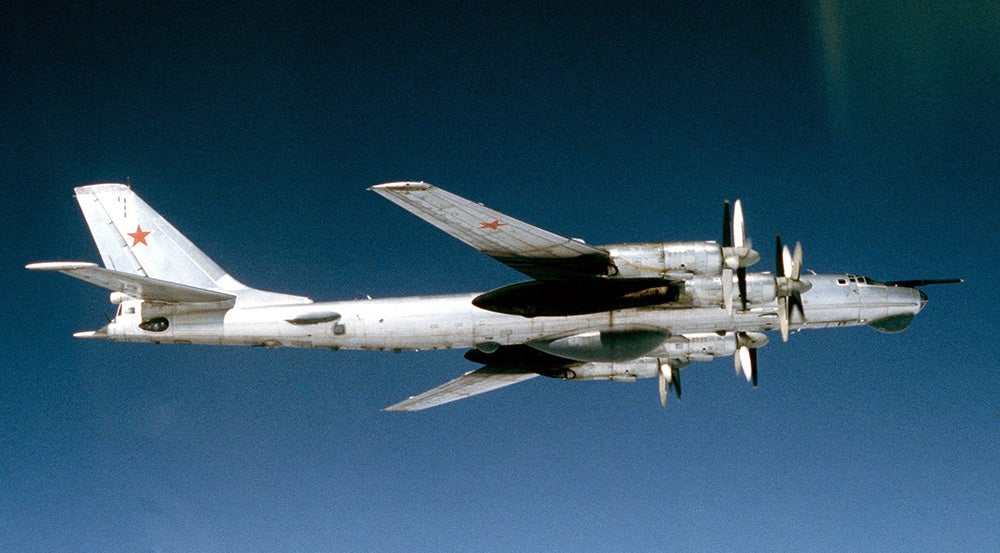
Over 500 Tu-95s were built from 1952-1993, and, in an age of supersonic intercontinental jet bombers, the turboprop Tu-95 remains in service with the Russian Air Force. The bomber was subsequently developed into the Tupolev Tu-114 Rossiya civilian airliner, which set no less than five world records for speed and range, some of which weren’t surpassed until the arrival of the Boeing 747SP . The Rossiya remains the fastest propeller-powered airliner in history, a record it has held since 1960. (Photo by Dmitriy Pichugin via Wikimedia Commons ; US Navy photos)
!!! UNKNOWN CONTENT TYPE !!!
!!! UNKNOWN CONTENT TYPE !!!
!!! UNKNOWN CONTENT TYPE !!!

November 11, 1983 – The first flight of the CASA/IPTN CN-235, a medium-range transport and cargo aircraft developed as a joint venture between Spain and Indonesia. Powered by two General Electric T700 turboprop engines, the CN-235 was originally designed for the military for use in maritime patrol and surveillance, but it also serves as a civilian regional airliner. Turkey is the largest international operator of the CN-235, flying 50 examples, along with the militaries of 25 other nations. The US Air Force operates 13 examples for use with special forces, and it is also flown by the US Coast Guard as the HC-144 Ocean Sentry . (Photo by Aldo Bidini via Wikimedia Commons )
!!! UNKNOWN CONTENT TYPE !!!
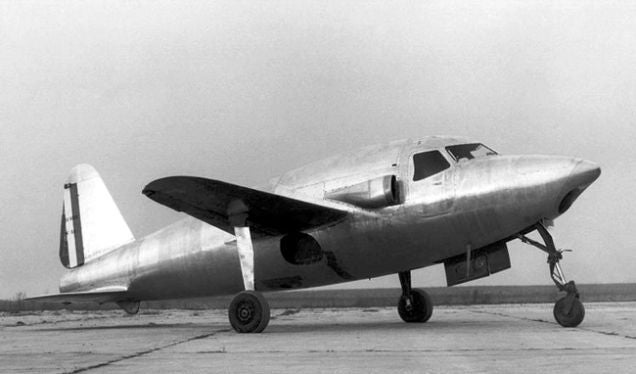
November 11, 1946 – The first flight of the Sud-Ouest Triton, the first jet-powered aircraft to be built by France. Development of the Triton by SNCASO ( Société nationale des constructions aéronautiques du sud-ouest ), which later became known as Sud Aviation , began in 1943 as a clandestine program, hidden from the Germans who had occupied France. The first Triton was powered by a Junkers Jumo 004 turbojet engine, and successive aircraft received the Rolls-Royce Nene centrifugal compressor turbojet. Only five Tritons were produced before the project was abandoned. Note the air intake under the nose, which passed through the cockpit and between the pilots. (Photo author unknown)
!!! UNKNOWN CONTENT TYPE !!!
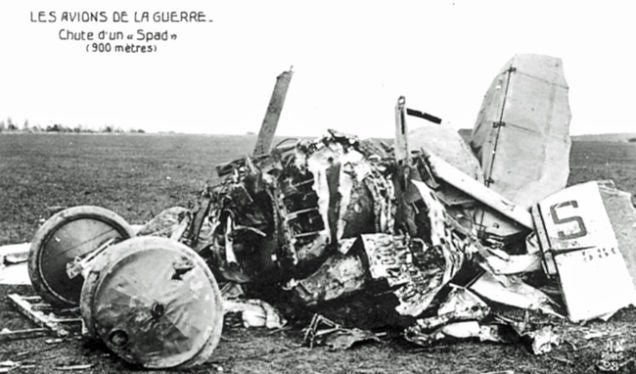
November 11, 1918 – World War I ends. World War I was the first war in which 20th century technology came to the battlefield. The machine gun, which was believed to be so horrible as to make war impossible, decimated armies as they advanced from the trenches, and the tank made its first appearance on the battlefield in an attempt to break the stalemate of trench warfare. Beginning just 11 years after the Wright Brothers’ first flight, WWI also saw the first widespread use of aircraft in battle. At first, observation planes, known as scouts, reconnoitered enemy lines and opposing pilots passed with a friendly wave. That soon gave way to small arms carried aloft, and eventually dedicated fighters and bombers. By the end of the Great War, the British, French and Americans had suffered roughly 20,000 air crew casualties (killed, wounded, missing or POW), while the German Air Service suffered over 15,000. The airplane had found its place as an indispensable part of modern warfare. (Photo author unknown)
!!! UNKNOWN CONTENT TYPE !!!
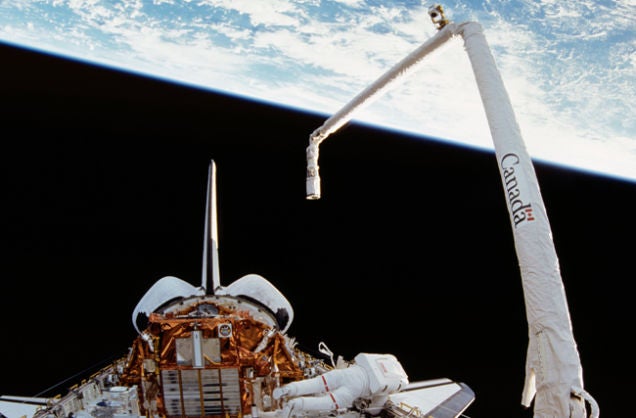
November 12, 1981 – The launch of Space Shuttle Columbia on STS-2, the second Space Shuttle mission, the second flight of Columbia , and the first time a spacecraft was reused and returned to orbit. It was also the first mission to utilize the robotic arm developed for the Shuttle by Canada. Officially called the Remote Manipulator System , it is more popularly known as the Canadarm , and is used to maneuver payloads out of and into the Shuttle’s cargo bay. STS-2 was originally envisioned as a boost mission to push the Skylab space station into a higher orbit, but delays in the Shuttle program made that impossible, and Skylab fell to earth in 1979, two years before the the launch of STS-2 . (NASA photo)
!!! UNKNOWN CONTENT TYPE !!!
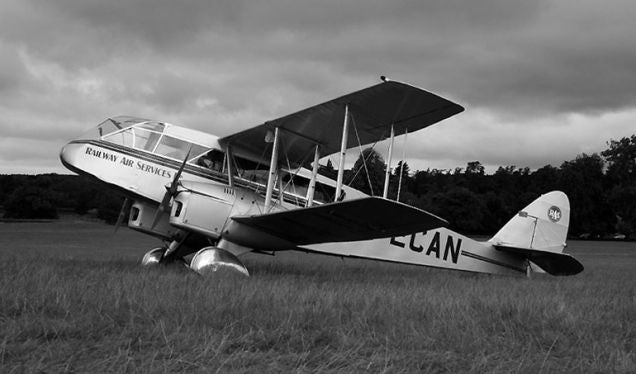
November 12, 1932 – The first flight of the de Havilland Dragon.
Building on the success of the single-engine
de Havilland Fox Moth
, de Havilland responded to a request by Hillman’s Airways for a larger, twin-engine design. Using the same engine and construction techniques of the Fox Moth, the Dragon had capacity for a pilot and 6-10 passengers and a maximum speed of 128 mph. Though production had stopped before WWII, the Dragon re-entered production to serve as a navigational trainer for the Royal Australian Air Force. A total of 2,002 Dragons were built, and it was subsequently developed into the larger and more powerful
de Havilland Dragon Rapide
.
(Public domain photograph)
!!! UNKNOWN CONTENT TYPE !!!
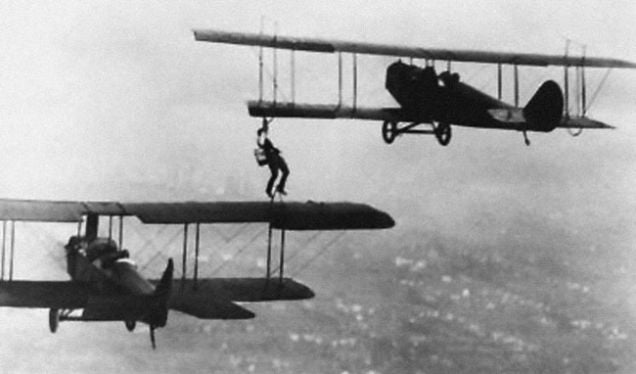
November 12, 1921 – The first air-to-air refueling is completed. While the 1923 aerial refueling via a long hose strung between two Airco DH.4 biplanes is considered the first official and somewhat practical aerial refueling of an airplane, a wing-walking daredevil named Wesley May lays claim to the actual first refueling, when he strapped a five-gallon can of gas weighing approximately 40 pounds onto his back and climbed from a Lincoln Standard biplane in flight onto a Curtiss Jenny flying alongside. Certainly, this stunt was not meant to be a practical solution, but barnstorming was never about being practical. (Photo via Peter M. Bowers Collection, Seattle Museum of Flight )
!!! UNKNOWN CONTENT TYPE !!!
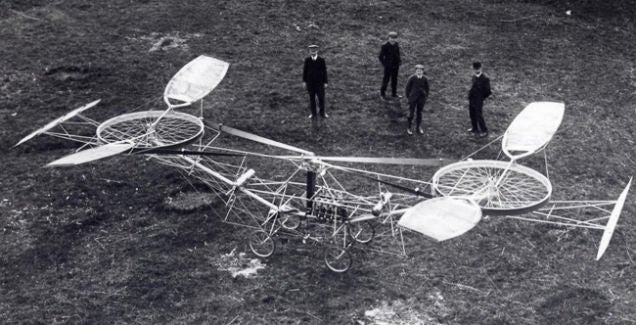
November 13, 1907 – The first flight of the Cornu helicopter.
Built by French bicycle-maker
Paul Cornu
, the twin-propeller helicopter is considered by some historians as the first rotary-wing aircraft to take flight. The Cornu helicopter was controlled by a system that varied the pitch of the propellers, and also employed vanes that directed the downdraft from the rotors. Cornu made several short hops, perhaps as much as six feet in the air, each lasting less than a minute. The brief flights gave Cornu just enough time to determine that his steering mechanism was ineffective and he soon abandoned the project. Modern analysis indicates that Cornu’s machine would likely never have flown successfully.
(Photo author unknown)
!!! UNKNOWN CONTENT TYPE !!!

November 14, 1970 – The crash of Southern Airways Flight 932, a chartered McDonnell Douglas DC-9 (N97S) flying from North Carolina to West Virginia. While conducting a nonprecision instrument landing at Tri-State Airport in Ceredo, West Virginia, the DC-9 struck trees short of the runway and crashed, killing all 75 on board, including 37 members of the Marshall University football team, along with nine coaches and 25 team boosters. Investigators determined that, during poor weather condition, the airliner had descended below minimum altitude for unknown reasons, possibly due to a malfunctioning altimeter or the pilot’s improper use of instrument data. The crash ended the school’s football program, but it was reconstituted in 1971 by a coach who wasn’t on the plane and with many players from the school’s junior varsity squad. The story has been dramatized in the movies Marshall University: Ashes to Glory , and We Are Marshall . (Crash photo via The Herald Dispatch ; team photo via Marshall University)
!!! UNKNOWN CONTENT TYPE !!!
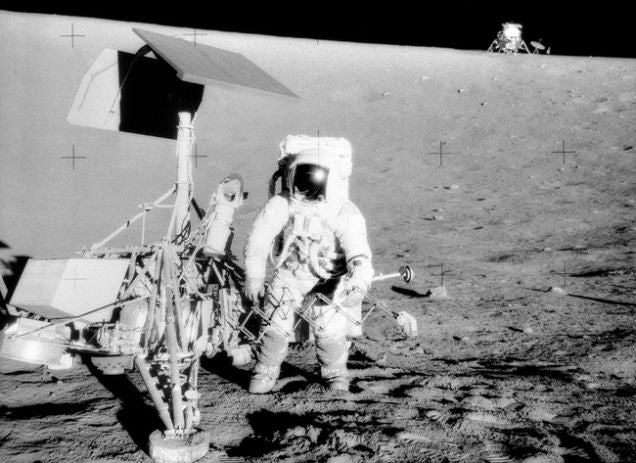
November 14, 1969 – The launch of Apollo 12, the second manned mission to the surface of the Moon. Launched only four months after Apollo 11 , Mission Commander Charles “Pete” Conrad and Lunar Module Pilot Alan Bean spent 31 hours on the surface of the Moon, while Command Module Pilot Richard F. Gordon, Jr. remained in orbit. Bean was able to land the Lunar Module exactly at the site of the Surveyor 3 unmanned probe, and, during two moonwalks, he and Conrad retrieved parts of the probe and returned them to Earth. They also carried the first color TV camera to the Moon, but Bean ruined the camera when he accidentally pointed it at the sun. Apollo 12 returned to Earth on November 24. (Photo of Conrad with Surveyor 3 via NASA)
!!! UNKNOWN CONTENT TYPE !!!
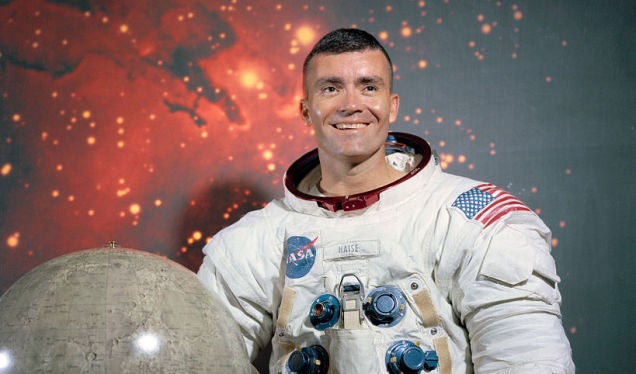
November 14, 1933 – The birth of Fred Haise.
Born in Biloxi, Mississippi, Haise served as a US Marine Corps fighter pilot from 1954 to 1956, but retired from active duty to complete a degree in aeronautical engineering. While serving in the Oklahoma Air National Guard, including an active duty stint during the
Berlin Crisis of 1961
, Haise was selected for
NASA Astronaut Group 5
and flew as the Lunar Module Pilot on the ill-fated
Apollo 13
mission in 1970. He was assigned as a backup on
Apollo 16
, and scheduled to fly on Apollo 19, but the mission was canceled due to budget constraints. Following Apollo, Haise worked on the
Space Shuttle program
, piloting three unpowered landings of the Shuttle
Enterprise
, and was scheduled to fly in space on the Shuttle before delays canceled that flight as well. Haise left NASA in 1979 to work for
Grumman Aerospace
, and retired in 1996.
(NASA photo)
!!! UNKNOWN CONTENT TYPE !!!
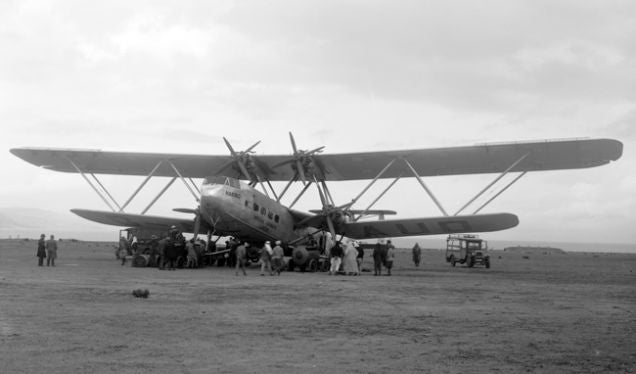
November 14, 1930 – The first flight of the Handley Page H.P.42,
a four-engine biplane passenger airliner that was built for
Imperial Airways
. The H.P.42 had an all-metal fuselage with fabric covered wings and tail, and was designed for long-range eastern routes, while the H.P.45, which carried more passengers but less baggage, was designed for European routes. Four of each type were constructed, and were given the mythological and historical names of
Hannibal
,
Horsa
,
Hanno
,
Hadrian
,
Heracles
,
Horatius
,
Hengist
,
Helena
.
Five of the aircraft were lost to crashes or other incidents, but the remaining three flew long enough to be pressed into service in the early days of WWII, but all were eventually lost by 1940.
(Library of Congress photo)
!!! UNKNOWN CONTENT TYPE !!!
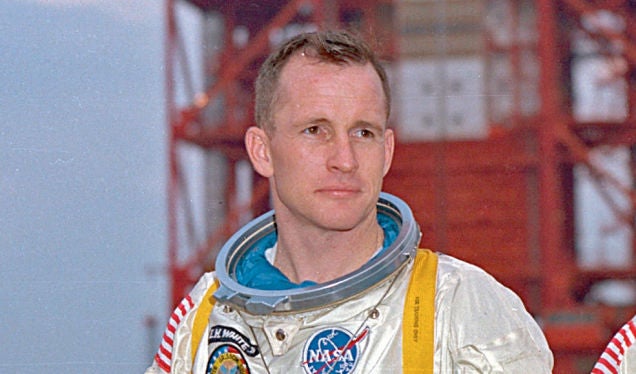
November 14, 1930 – The birth of Edward White, an aeronautical engineer, US Air Force pilot, test pilot, and NASA astronaut. White was born in San Antonio, Texas, attended the US Military Academy, was commissioned in the US Air Force, and served as a fighter pilot in Europe. White was chosen for NASA Astronaut Group 2 and piloted Gemini 4 in 1965, becoming the first American to walk in space. The following year, White was selected as the Senior Pilot for Apollo 1 , the first manned mission of the Apollo program . During a ground test of the Saturn IB booster and spacecraft components, a fire engulfed the Command Module, killing White, along with astronauts Virgil “Gus” Grissom and Roger Chaffee . White was buried with full military honors at West Point Cemetery, and was posthumously awarded the Congressional Space Medal of Honor . (NASA photo)
!!! UNKNOWN CONTENT TYPE !!!
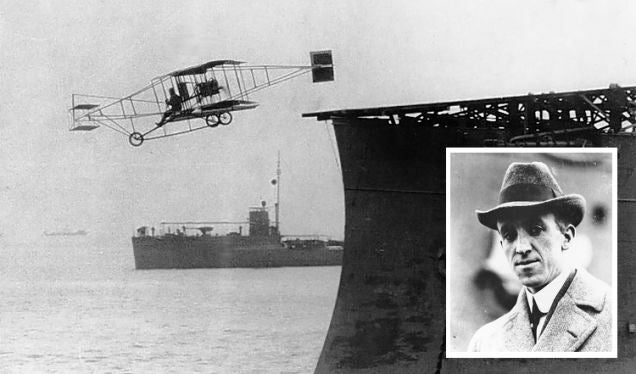
November 14, 1910 – Eugene Ely becomes the first person to take off from a ship. In 1910, the Secretary of the Navy appointed Ely, along with aviation pioneer Glenn Curtiss , to investigate the operation of aircraft from ships. The appointment led to two experiments, the first with Ely piloting a Curtiss Pusher from a temporary runway constructed on the deck of the light cruiser USS Birmingham (CL-2) anchored in Hampton Roads near Norfolk, Virginia, then, two months later, Ely landed on the USS Pennsylvania (ACR-4) anchored in San Francisco Bay. While neither ship was a true aircraft carrier, Ely’s achievements helped prove the feasibility of naval aviation. (US Navy photo)
!!! UNKNOWN CONTENT TYPE !!!
!!! UNKNOWN CONTENT TYPE !!!
!!! UNKNOWN CONTENT TYPE !!!
!!! UNKNOWN CONTENT TYPE !!!
!!! UNKNOWN CONTENT TYPE !!!
!!! UNKNOWN CONTENT TYPE !!!
!!! UNKNOWN CONTENT TYPE !!!
If you enjoy these Aviation History posts, please let me know in the comments. And if you missed any of the past articles, you can find them all at
Planelopnik History
. You can also find more stories about aviation, aviators and airplane oddities at
Wingspan
.
!!! UNKNOWN CONTENT TYPE !!!
 "HammerheadFistpunch" (hammerheadfistpunch)
"HammerheadFistpunch" (hammerheadfistpunch)
11/14/2017 at 12:41, STARS: 1
!!! UNKNOWN CONTENT TYPE !!!
The hustler. If this jet was still flying there would be 1000 videos on the tubes with this song.
 "For Sweden" (rallybeetle)
"For Sweden" (rallybeetle)
11/14/2017 at 12:41, STARS: 5
Forget restoring a Concorde, let’s raise money to get a B-58 flying again.
 "ttyymmnn" (ttyymmnn)
"ttyymmnn" (ttyymmnn)
11/14/2017 at 12:42, STARS: 2
I’d chip in for that.

11/14/2017 at 14:12, STARS: 3
Tu-95, Keeping Interceptors Busy for Sixty-Five Years

 "ttyymmnn" (ttyymmnn)
"ttyymmnn" (ttyymmnn)
11/14/2017 at 14:45, STARS: 1
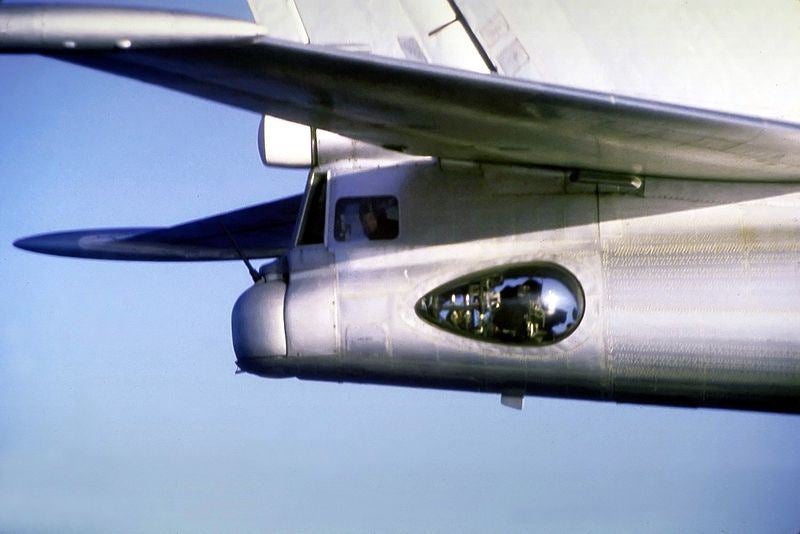
Say, “Cheese!”

11/14/2017 at 14:53, STARS: 1
Charlie
: Eh, lieutenant, what were you doing there?
Goose
: Communicating.
Maverick
: Communicating.
Keeping up foreign relations.
 "Rusty Vandura - www.tinyurl.com/keepoppo" (rustyvandura)
"Rusty Vandura - www.tinyurl.com/keepoppo" (rustyvandura)
11/16/2017 at 15:55, STARS: 0
I was going to say, the Buff might fill that role for 100 years.
 "ttyymmnn" (ttyymmnn)
"ttyymmnn" (ttyymmnn)
11/16/2017 at 15:57, STARS: 1
There’s a running joke in the AF that the B-1 crews will fly home AMARG in a B-52.
 "Rusty Vandura - www.tinyurl.com/keepoppo" (rustyvandura)
"Rusty Vandura - www.tinyurl.com/keepoppo" (rustyvandura)
11/16/2017 at 16:24, STARS: 0
I don’t know the acronym AMARG.
 "ttyymmnn" (ttyymmnn)
"ttyymmnn" (ttyymmnn)
11/16/2017 at 16:27, STARS: 1
The boneyard at Davis-Monthan in Tucson, home of the 309th Aerospace Maintenance and Regeneration Group.

 "h7gj" (anithas2612)
"h7gj" (anithas2612)
07/05/2018 at 05:00, STARS: 0
Do you think that to dramatically improve your success rate you have to read tons of thick books, buy expensive software and spend countless hours of learning more about Forex?
What I’m going to share with you is something very EASY to use and very POWERFUL at the same time.
Let me give you an EXAMPLE:
Imagine you trade a system that makes 50% winning trades, but another 50% are losing trades. If you increase your odds of winning by only 20%, that would make 70% winning trades and 30% losing trades.
Well, HOW TO accomplish that?
Just pick the best trending pair at the current time and simply follow the trend! I have found ONE INCREDIBLE TOOL that continuously scans the Forex market and picks the most reliable trending pairs for you.
==>
http://www.forextrendy.com
?ljsjhd8374h
By taking signals in the direction of a strong trend you would REDUCE UNNECESSARY LOSSES and increase the odds of winning. You need to know “how well” the market is trending to avoid very short-term trends.
STOP hunting the market for every potential trade. Pick only the best trending pairs and time frames and DO NOT take any trading signals in the choppy market (unless you know exactly what you are doing).
Successful traders keep it simple and this is the way how the pros made fortunes in the markets - by trading less and making more.
To increase the profitability of any system or robot you are currently using, check out this easy and powerful ultimate solution:
==>
http://www.forextrendy.com
?ljsjhd8374h